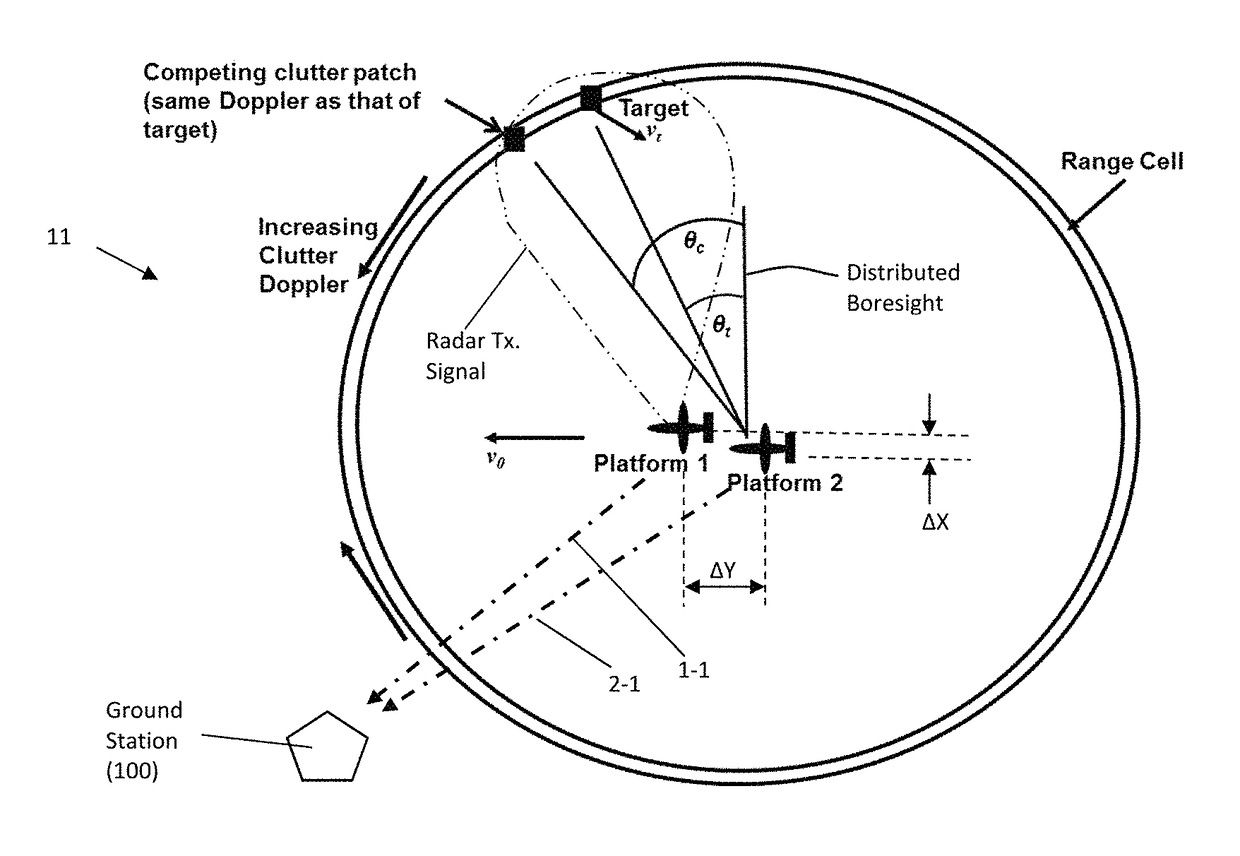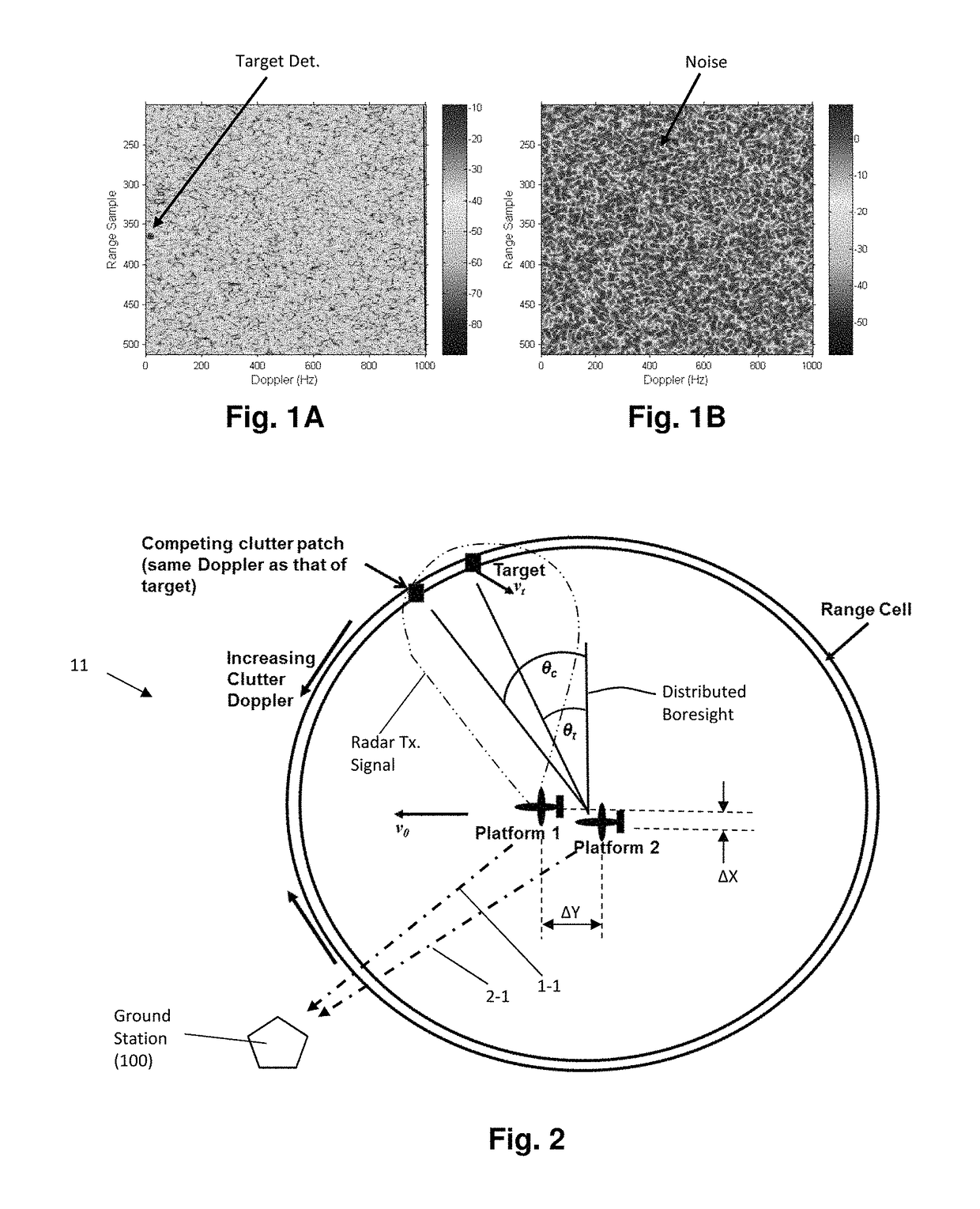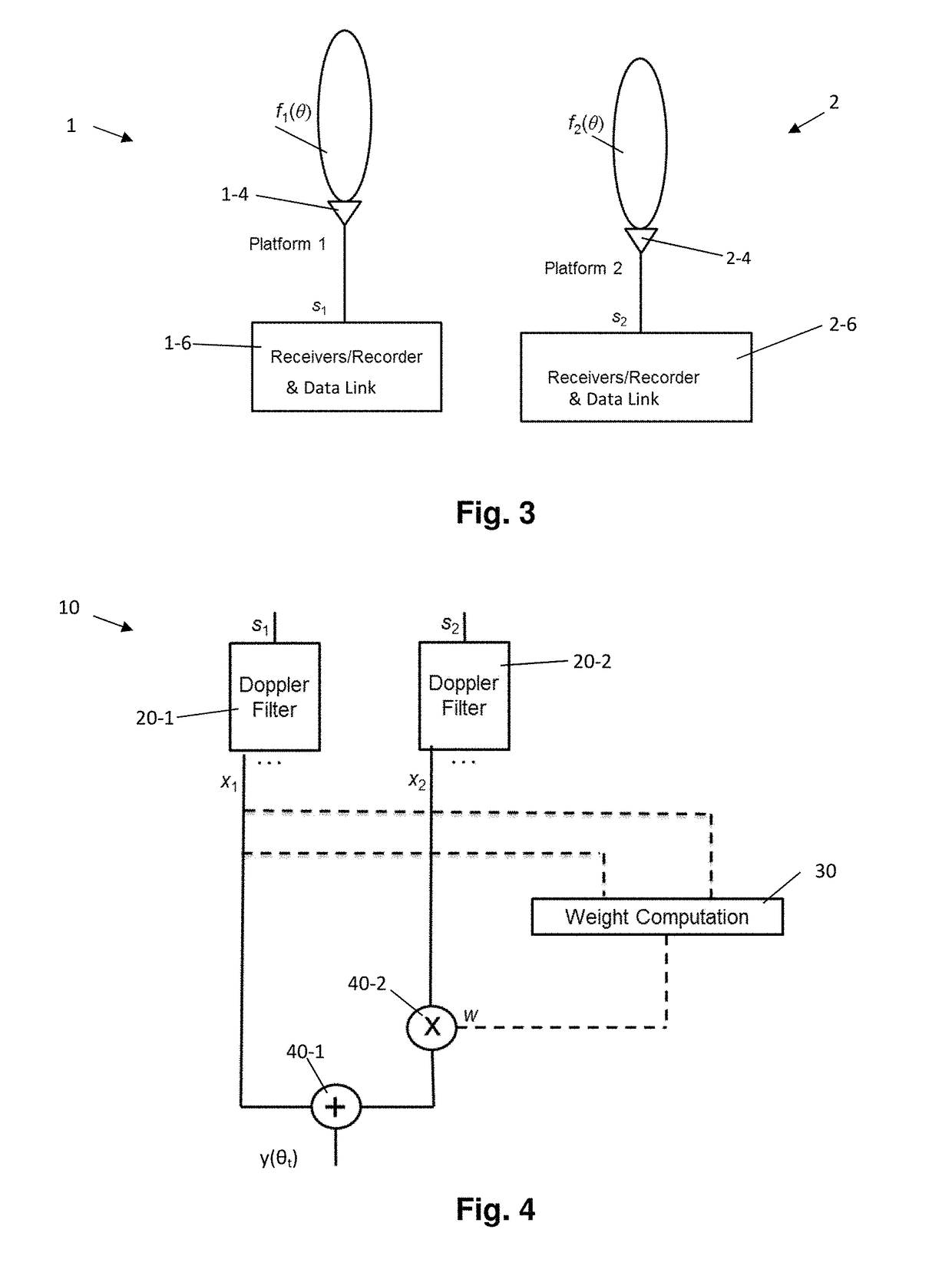Multiplatform GMTI radar with adaptive clutter suppression
a radar and clutter suppression technology, applied in the field of radar processing systems, can solve the problems of limiting factors of gmti radar, slow-moving target background clutter, and mdv is primarily limited, so as to increase the electrical size of the radar antenna aperture, reduce mdv, and achieve the effect of large effective electrical apertur
- Summary
- Abstract
- Description
- Claims
- Application Information
AI Technical Summary
Benefits of technology
Problems solved by technology
Method used
Image
Examples
Embodiment Construction
[0055]Reference will now be made in detail to the present exemplary embodiments of the invention, examples of which are illustrated in the accompanying drawings. Wherever possible, the same reference numbers will be used throughout the drawings to refer to the same or like parts. An exemplary embodiment of the system of the present invention is shown in FIG. 5, and is designated generally throughout by reference numeral 10.
[0056]Referring to FIG. 2, a diagram illustrating the geometry of the multiplatform environment 11 is disclosed. Two aircraft (platform 1 and platform 2) are shown at the center of the drawing. As the drawing indicates, the radial velocity vo of the clutter is at a positive maximum in the direction that the platforms are traveling and negative minimum in the opposite direction. The radial absolute velocity is at a minimum amidships. The Doppler frequency of the clutter also is at a positive maximum in the direction of travel and at a negative minimum directly behi...
PUM
 Login to View More
Login to View More Abstract
Description
Claims
Application Information
 Login to View More
Login to View More - R&D
- Intellectual Property
- Life Sciences
- Materials
- Tech Scout
- Unparalleled Data Quality
- Higher Quality Content
- 60% Fewer Hallucinations
Browse by: Latest US Patents, China's latest patents, Technical Efficacy Thesaurus, Application Domain, Technology Topic, Popular Technical Reports.
© 2025 PatSnap. All rights reserved.Legal|Privacy policy|Modern Slavery Act Transparency Statement|Sitemap|About US| Contact US: help@patsnap.com



